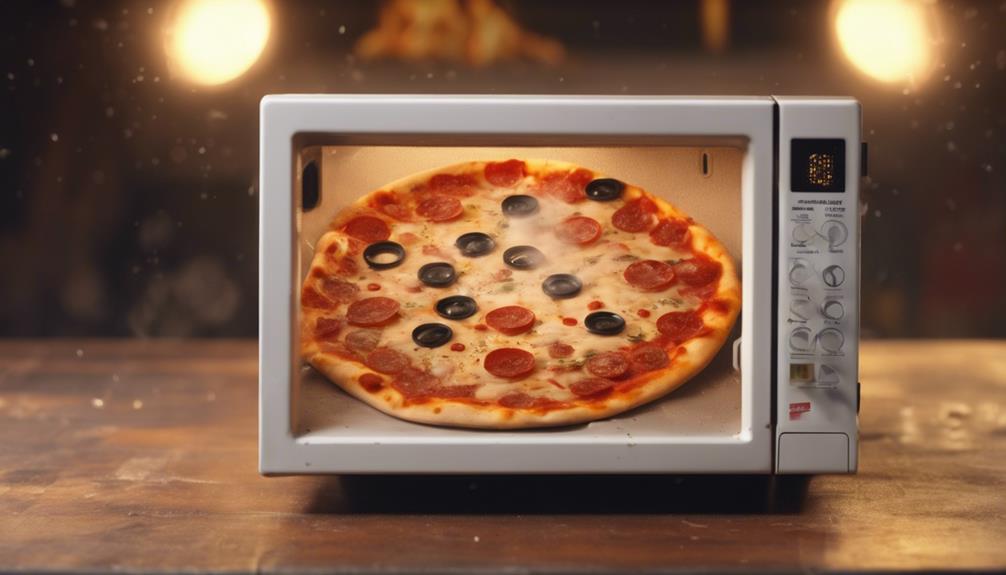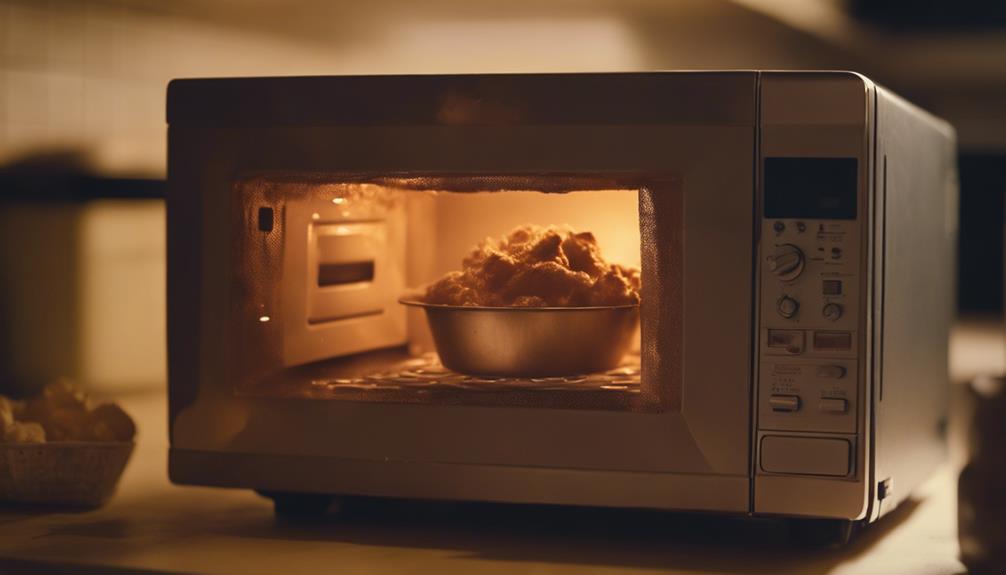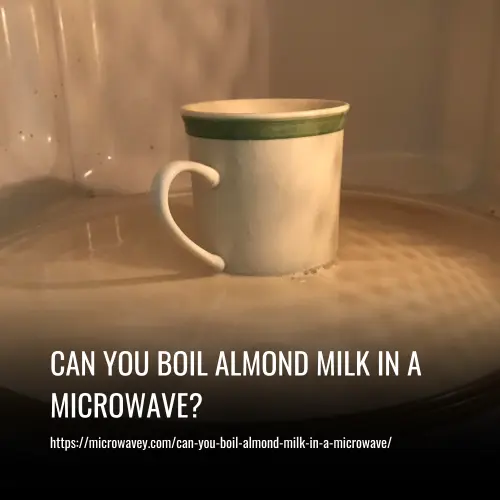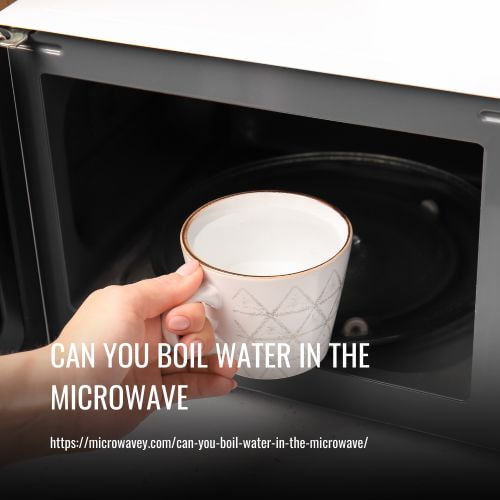No, you should not microwave cardboard.
Microwaving cardboard can pose risks, such as the potential for the material to catch fire or release harmful chemicals.
It is important to always follow the manufacturer's instructions and guidelines for using the microwave safely.
Key Takeaways
- Pure cardboard containers are safe for microwaving as long as they do not contain glue, adhesive, ink, wax, plastic, or metal components.
- Supervise closely to prevent overheating, sparks, or fires while microwaving cardboard.
- Transfer food from questionable cardboard containers to a microwave-safe dish to avoid safety hazards.
- Take caution when microwaving pizza boxes, ensuring they are free of plastic or metal components and labeled microwave-safe.
Safety of Microwaving Cardboard
When considering the safety of microwaving cardboard, it is crucial to discern the materials and components present in the cardboard food containers. Pure cardboard containers without plastic coatings, metal, glue, ink, wax, or plastic linings are generally safe for microwave use.
However, it is essential to supervise closely to prevent overheating or sparks from any hidden metal components that may be present in the cardboard. To ensure safe heating, the cardboard container should always have food or liquid inside to absorb microwave energy properly.
It is also important to remove any foil liners or metal handles from the cardboard before microwaving to avoid fire hazards. If unsure about the safety of the cardboard container, transferring the food or drink to a microwave-safe dish is a prudent choice.
Cardboard Types to Avoid
To ensure the safety of your food and health when microwaving cardboard, it is imperative to steer clear of cardboard types containing glue, adhesive, printed ink, wax, plastic linings, or metal components.
Microwaving cardboard with glue or another adhesive can release toxic fumes, while cardboard with wax or plastic linings may contaminate your food. Additionally, cardboard containers with metal handles should be avoided as they can cause sparks and potentially start fires in the microwave.
Always opt for cardboard containers explicitly labeled as microwave-safe to prevent any health hazards. Being mindful of the type of cardboard you use in the microwave is essential for maintaining a safe cooking environment and ensuring the integrity of your food.
Can Pizza Boxes Go In?

Pizza boxes may be placed in the microwave if they are devoid of plastic or metal components.
When heating a pizza box in the microwave, it is crucial to ensure it is a pure cellulose cardboard container without any potential safety hazards.
The heating process in the microwave involves radio waves that may cause materials like plastic or metal to melt, posing a safety risk. Therefore, it is essential to check for a microwave-safe label on the cardboard before microwaving it.
Preventing Cardboard Fire
Taking precautions when microwaving cardboard is crucial to prevent potential fire hazards.
Microwaving cardboard containers, especially those that are empty or heated for prolonged periods, can pose a fire hazard. The high temperature inside the microwave can deplete the moisture content of the cardboard, increasing the risk of spontaneous combustion of fibers.
Cardboard boxes, particularly those from takeout containers, should be microwaved cautiously to avoid heating them for extended periods. It is essential to note that cardboard takeout containers may contain metal elements, which can lead to sparks or fires if exposed to high temperatures.
To minimize these risks, it is advisable to use a low power setting and avoid microwaving cardboard containers that contain metal.
Duration for Microwaving Cardboard

When considering the duration for microwaving cardboard, it is essential to adhere to safety guidelines to prevent potential fire hazards.
To microwave cardboard safely, heat food in short intervals under two minutes, allowing breaks to prevent overheating. Opt for a low power setting to minimize the risk of fire hazards.
If food requires longer heating, transfer it to a microwave-safe ceramic dish instead of microwaving cardboard continuously. Avoid placing cardboard containers in the microwave on their own, as this can lead to overheating and potential fire risks.
Frequently Asked Questions
Can Microwaving Cardboard Release Harmful Chemicals Into My Food?
Microwaving cardboard can introduce harmful chemicals into food due to high temperatures causing leaching of substances like PCBs and phthalates. To safeguard against chemical exposure and ensure food safety, avoid microwaving cardboard, opting for alternative containers to minimize health risks.
Will Microwaving Cardboard Affect the Taste or Texture of My Food?
When microwaving food in cardboard packaging, consider the impact on taste and texture. Cardboard's insulation properties can affect heat distribution and moisture transfer, potentially altering your meal's quality. Explore cardboard alternatives for optimal food safety and flavor retention.
Is It Safe to Microwave Cardboard With Printed Designs or Labels on It?
Cardboard safety in microwaves is crucial. Printed designs or labels pose risks due to chemicals in the ink, sparking potential, and contamination. Opt for plain cardboard to protect food and your health. Prioritize safety by choosing suitable materials.
Can Microwaving Cardboard Cause the Microwave to Emit Sparks or Catch Fire?
Cardboard safety during microwave use is crucial to prevent fire risks. Overheating can cause sparks and combustion due to diminished moisture. Follow safety guidelines, avoid prolonged heating, and monitor for any signs of hazards to ensure safe usage.
How Can I Tell if Cardboard Is Microwave-Safe or Not?
To ensure safety when microwaving cardboard, look for microwave-safe labels, avoid shiny coatings, remove any non-microwave-safe elements, and transfer food if uncertain. Consider sustainable, biodegradable options to reduce environmental impact and potential food contamination risks.
Conclusion
In conclusion, ensuring the safety of microwaving cardboard involves avoiding certain types of cardboard, preventing fire hazards, and being cautious about heating durations.
Prioritizing safety measures, such as using microwave-safe cardboard, supervising closely, and transferring food to a suitable dish when in doubt, is essential.
By following these precautions, the risk of accidents and potential harm can be significantly reduced.


